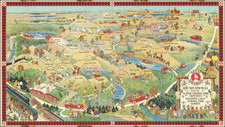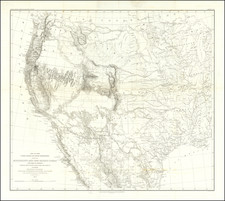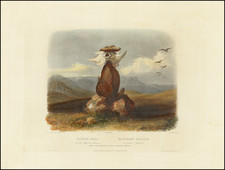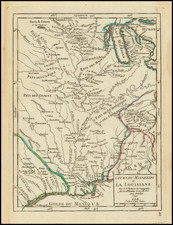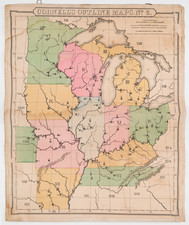Fine map of Kansas Territory, extending to the Colorado Gold Regions, one of the few obtainable maps to show Kansas Territory prior to the formation of Colorado Territory.
W.H. Holmes map of Kansas Territory is one of the few printed maps to show Kansas Territory in 1859, the year in which the Colorado Gold Rush re-defined the landscape of the Eastern shope of the Rocky Mountains. The map's most noteworthy feature is the location of the Gold Regions, along with the towns of Denver City, Auraria and Montana.
The town of Auraria was founded by William Greeneberry Russell and a group of miners from Georgia on November 1, 1858, 3 weeks before William Larimer platted the future "Denver City" across Cherry Creek. The town was named for the gold mining settlement of Auraria, Georgia. In April 1859, Auraria was the site of a convention to create the provisional state of "Jefferson" , but was never recognized by the U.S. government. On April 6, 1860, Auraria was incorporated into Denver.
The map shows the routes of the major early explorers and topographical engineers in the region, including Major W. H. Emory, Lieut. W. G. Peck, Captain Nathan Boone, Captain J. C. Fremont, Captain J. Pope, Lieut. Franklin, Colonel Sumner, Lieut. I. C. Woodruff and Major Carry. A number of early Forts and Native American regions are shown, along with several as yet unnamed proposed railroad lines.
Published by Charles Desilver in 1859, Holmes map is one of the first maps to name Denver. Kansas Territory was created in 1854, running between the 37th and 40th parallels between Missouri and the Continental Divide. In late 1858, gold was discovered at the confluence of the Platte River and Cherry Creek. The resulting "Pike's Peak" gold rush of 1858-60, resulted in the accelerated formation of Colorado Territory and the birth of the largest city on the eastern slope of the Rocky Mountains.









